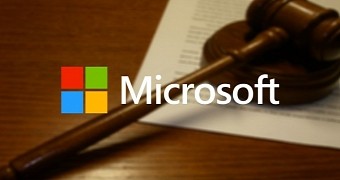Windows 10 was launched nearly 2 years ago, but this doesn’t mean Microsoft’s problems caused by the upgrade system are over.
Three Windows users whose computers were upgraded to Windows 10 decided to file a lawsuit against Microsoft after the operating system caused loss of data and hardware damage, which in the end led to substantial costs for each of them.
In the lawsuit documents (via The Reg), the plaintiffs explain that Microsoft did not “exercise reasonable care in designing, formulating, and manufacturing the Windows 10 upgrade,” becoming responsible for damages caused to users in the form of data loss and hardware issues.
Microsoft: Claims without merit
The three plaintiffs, Stephanie Watson, Robert Saiger, and Howard Goldberg, were all pressured to install Windows 10 by Microsoft’s aggressive nags that showed up on the desktop frequently, and two of them eventually agreed to perform the switch to the new OS.
Watson, however, says that the upgrade to Windows 10 was performed without authorization, and even caused data loss, so professional services were needed to recover specific files. Saiger says his computer was also broke down, while Goldberg claims he installed Windows 10 six months after being nagged to do it every single day, explaining that his PC also stopped functioning when he finally completed the switch.
The plaintiffs are seeking class-action status, explaining there are hundreds of thousands of angry users in the United States who got their computers broken down because of the forced upgrade to Windows 10.
Microsoft has already issued a statement as a response to the lawsuit, explaining that these claims are without merit, as all Windows 10 users had 30 days to downgrade to their previous operating systems after the switch to Windows 10 if they weren’t satisfied with the new OS.
"The Windows 10 free upgrade program was a choice designed to help people take advantage of the most secure, and most productive Windows. Customers had the option not to upgrade to Windows 10. If a customer who upgraded during the one year program needed help with the upgrade experience, we had numerous options including free customer support and 31-days to roll back to their old operating system. We believe the plaintiffs’ claims are without merit,” the firm said.

 14 DAY TRIAL //
14 DAY TRIAL //